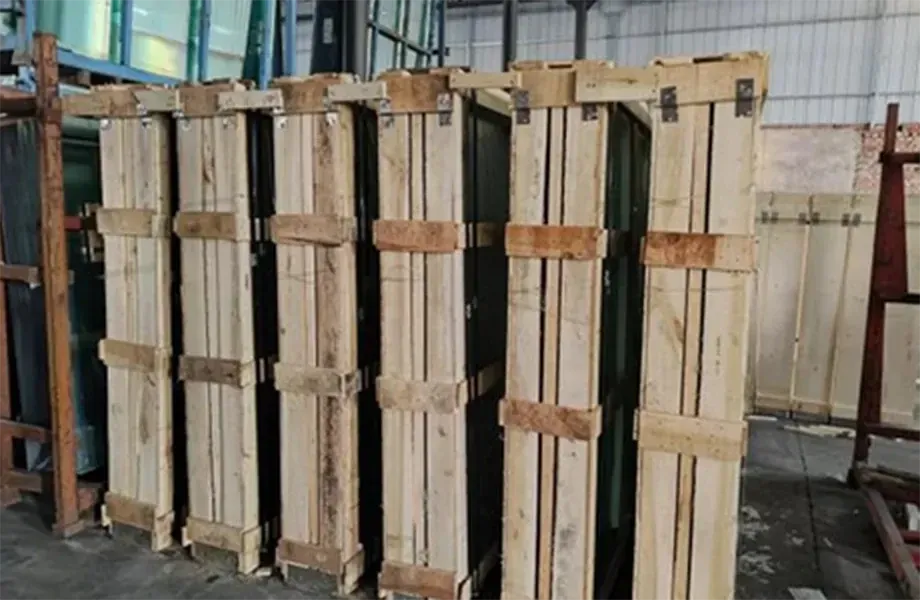Nov . 08, 2024 06:36 Back to list
Properties and Applications of Annealed Float Glass in Modern Construction
The Evolution and Applications of Annealed Float Glass
Annealed float glass has become a fundamental component in the fields of architecture, automotive, and interior design due to its remarkable properties and versatility. The process of manufacturing annealed float glass has a rich history, and its applications have evolved significantly over time. Understanding the composition, production process, advantages, and uses of annealed float glass can provide valuable insights into why it is so widely utilized today.
Manufacturing Process
The production of annealed float glass begins with the melting of raw materials, which typically include silica sand, soda ash, and limestone. These materials are heated in a furnace to temperatures exceeding 1600 degrees Celsius, resulting in molten glass. The key aspect of float glass is its unique formation process. The molten glass is poured onto a bed of molten tin, where it floats, spreading out to form an even, flat surface. This method ensures that the glass has a uniform thickness and smooth finish, free from imperfections.
After the glass has been formed, it enters the annealing stage, where it is gradually cooled in a controlled environment. This step is crucial as it relieves internal stresses within the glass, resulting in a material that is more stable and less prone to breakage. The annealing process can take several hours, but it is essential to ensure the quality of the final product.
Characteristics of Annealed Float Glass
One of the primary characteristics of annealed float glass is its clarity. The manufacturing process eliminates bubbles and distortions, creating a clear and unobstructed view. This transparency is a vital feature in many applications, especially in architectural and automotive designs where visibility is paramount.
Another important property is its smooth surface. The float glass process results in a non-reflective surface, enhancing the aesthetic appeal of architectural applications like windows and facades. Moreover, annealed float glass can be easily further processed through cutting, polishing, or lamination, allowing it to adapt to a variety of uses.
Advantages of Annealed Float Glass
annealed float glass

Annealed float glass carries several advantages. First, its cost-effectiveness makes it an attractive option for both commercial and residential projects. Compared to other types of glass, such as tempered or laminated glass, annealed float glass can be produced at a lower cost, making it a desirable choice for budget-conscious projects.
Second, the annealing process enhances the material's integrity. While not as strong as tempered glass, annealed float glass can withstand normal handling and environmental stresses, making it suitable for various applications where extreme force is not a primary concern.
Lastly, the ability to customize annealed float glass through processes like coating (for energy efficiency) or tinting (to reduce glare) further expands its usability in modern architectural design.
Applications of Annealed Float Glass
The applications of annealed float glass are vast and varied. In the construction industry, it is commonly used in windows, doors, and facades, providing not only aesthetic benefits but also thermal insulation and soundproofing qualities. Architects often choose float glass for its ability to create expansive glass facades, allowing for natural light while maintaining energy efficiency.
In the automotive sector, annealed float glass is utilized for windshields and windows, where clarity and safety are of utmost importance. The production process ensures that automotive glass is free from defects, thus enhancing driver visibility and passenger safety.
Furthermore, annealed float glass serves as a popular choice for interior design elements, such as glass partitions, shower doors, and tabletops. Its elegant appearance and adaptability to different designs make it a preferred option for both residential and commercial interior spaces.
Conclusion
In summary, annealed float glass has significantly impacted various industries due to its superior clarity, smooth surface, and economic advantages. The meticulous manufacturing process and its ability to serve multiple applications underscore its importance in modern design and construction. As technology advances, the potential for further innovations in the production and application of annealed float glass continues to grow, ensuring its presence in future architectural and design projects. The evolution of this material reflects the broader trends towards transparency and openness in contemporary architecture, making it a timeless choice for building and design aesthetics.
-
Safety and Style with Premium Laminated Glass Solutions
NewsJun.24,2025
-
Reinvents Security with Premium Wired Glass
NewsJun.24,2025
-
Premium Float Glass Line for Modern Architecture
NewsJun.24,2025
-
Low Emissivity Glass for Energy-Efficient Architecture
NewsJun.24,2025
-
High-Performance Insulated Glass Solutions for Modern Architecture
NewsJun.24,2025
-
Elevates Interior Style with Premium Silver Mirror
NewsJun.24,2025
Related PRODUCTS














